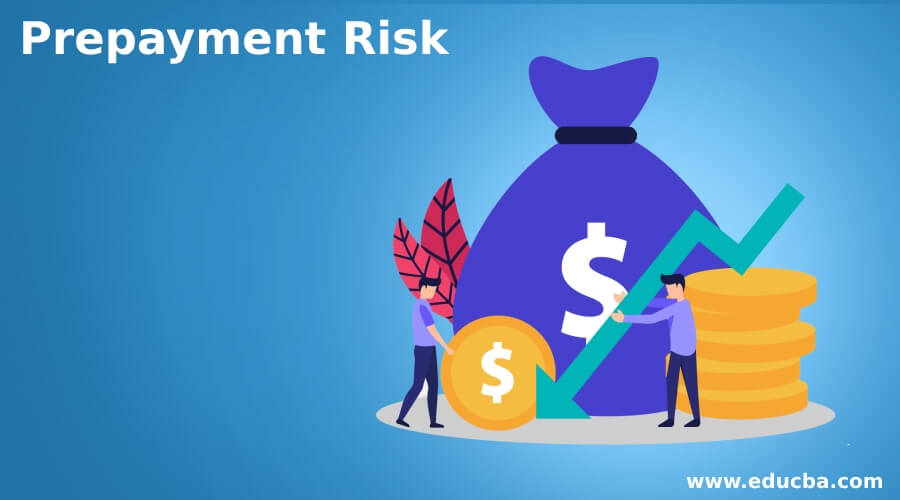Updated July 7, 2023
What is Prepayment Risk?
The term “prepayment risk” refers to the risk associated with the early repayment of the principal of fixed-income securities. When a borrower repays the entire or part of the principal prematurely, they are not liable to pay the interest on that part of the principal, which means that the investors of the fixed-income securities will receive lower interest payments than expected.
As a result, prepayment risk is prevalent for fixed-income securities, such as mortgage-backed securities and callable bonds.
Explanation of Prepayment Risk
It refers to the risk of the borrower’s premature repayment of an existing loan. It might seem confusing how prepayment risk, which denotes repayment of a loan in a relatively shorter period than the original maturity, can be a risk to anybody. However, it is essential to understand that prepayment is a risk from a lender’s perspective, as it exposes the lender to another significant risk – reinvestment risk.
How Does Prepayment Risk Work?
Although there might be several circumstances under which the borrower might choose to prepay the mortgage, there are two significant circumstances:
- The borrower sells the home and uses the proceeds from the sale to pay off the mortgage.
- The borrower might refinance the mortgage to take advantage of a falling interest rate environment.
Example
Let us assume that David has availed of a $50,000 mortgage loan at 8%. However, the interest rates in the market have fallen to 6%, and thus there is a much stronger incentive for David to refinance his existing mortgage. Next, determine the benefits David can receive if he prepays the loan.
Solution:
- Given, Mortgage loan = $50,000
- Initial interest rate = 8%
- New interest rate = 6%
Now, the benefit that David can have can be calculated as follows,
- = (8% – 6%) * $50,000
- = $1,000
Therefore, David can save $1,000 through the prepayment, which is a loss of anticipated income for the lender.
How to Manage Prepayment Risk?
To manage the prepayment risk faced by the investors of fixed-income securities, prepayment penalties are levied on the borrowers to discourage them from repaying the mortgage loans earlier than their expected maturities.
Prepayment Risk Factors
Some of the most common factors that impact it are as follows:
- Interest rate level: A declining interest rate environment may lure borrowers into refinancing their loans. At the same time, an increasing trend may encourage borrowers to prepay to reduce the burden of interest payments.
- Changes in home prices: An increase in home prices may prompt the borrowers to prepay and cash out some portion of the increased equity.
- Credit score: Some borrowers prefer to prepay loans to maintain a healthy credit score.
- Penalties: The quantum of fines and administrative charges vis-à-vis the benefits from the reinvestment is also essential.
- Refinancing burnout: The risk of prepayment decreases after a period of long, unrelenting refinancing activity.
Interest Rates and Prepayment Risk
Interest rates are the main driving factor for the prepayment risks. Therefore, let us look at the impact of interest rates on prepayment risk in the following two scenarios.
- Scenario 1: If the interest rates fall, the borrowers can refinance the existing floating-rate mortgage loans into fixed-rate mortgages. In this case, the potential benefit of refinancing urges the borrower to prepay and thus increases the prepayment risk of the lender.
- Scenario 2: If the interest rates surge, the borrowers are tempted to repay the loans quickly to avoid the burden of higher interest payments. In this case, the fear of higher interest payment forces the borrowers to prepay and thus increases the prepayment risk of the lender.
Criticism of Prepayment Risk
One of the inherent problems with prepayment risk is that it can make life difficult for the investors, especially in the case of callable bonds that strongly favor the issuers. For instance, the issuers enjoy the benefits of locking in low rates in an increasing interest rate environment, while the investors are stuck with the lower return. But on the other hand, if the interest rates fall, the issuers straightaway call back their bonds and refinance them at lower rates, which eliminates any possibility of the investors enjoying the benefits of the interest rate change. In short, the investors of callable bonds tend to lose when interest rates go up, and they can’t even win when the interest rates go down.
Advantages
- Investors can purchase securities with embedded prepayment risks at a relatively lower rate.
- The pool of fixed-income securities with embedded prepayment risks is usually priced accordingly. However, the investors can earn higher returns if the prepayment is lower than the expected prepayment during the loan tenure.
Disadvantages
- First, it increases the uncertainty of interest payments in the future.
- Second, it exposes the investors to reinvestment risk in a declining interest rate environment.
- Third, prepayment risks make it difficult to gauge and determine fixed-income securities’ cash flows (interest payment and principal repayment).
Conclusion
So, it can be seen that prepayment risk can’t be avoided, and thus banks and other financial institutions accept it as a part of the lending business. Consequently, the securities with prepayment risk are priced accordingly, considering the expected movements in interest rates and the historical prepayment rates. Also, to mitigate the prepayment risks, the bank levies prepayment penalties to discourage premature repayment of loans.
Recommended Articles
This is a guide to Prepayment Risk. Here we also discuss the introduction and how it works, along with its advantages and disadvantages. You may also have a look at the following articles to learn more –


